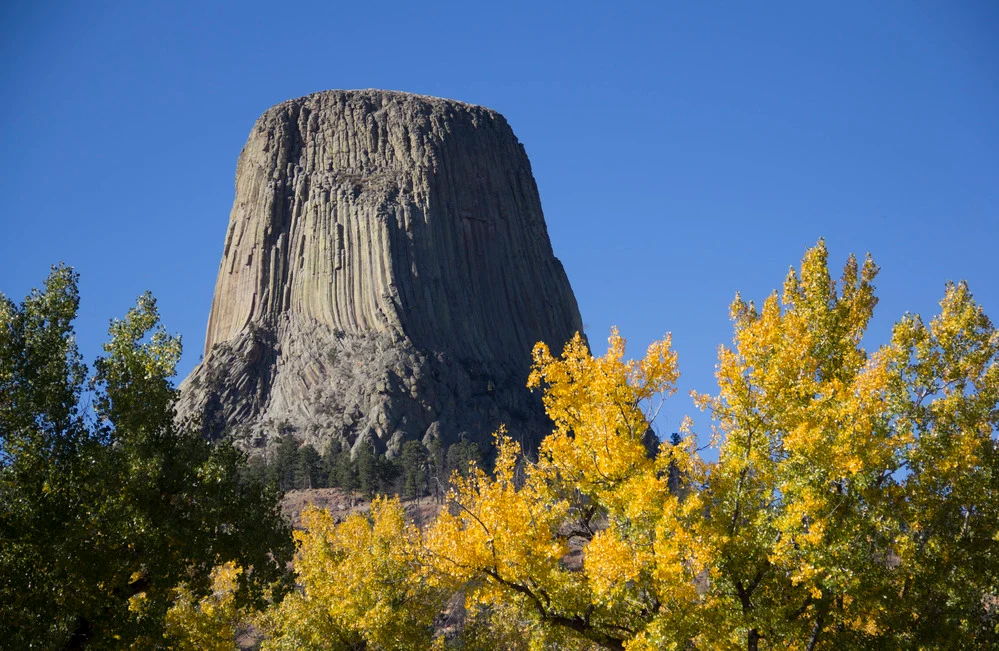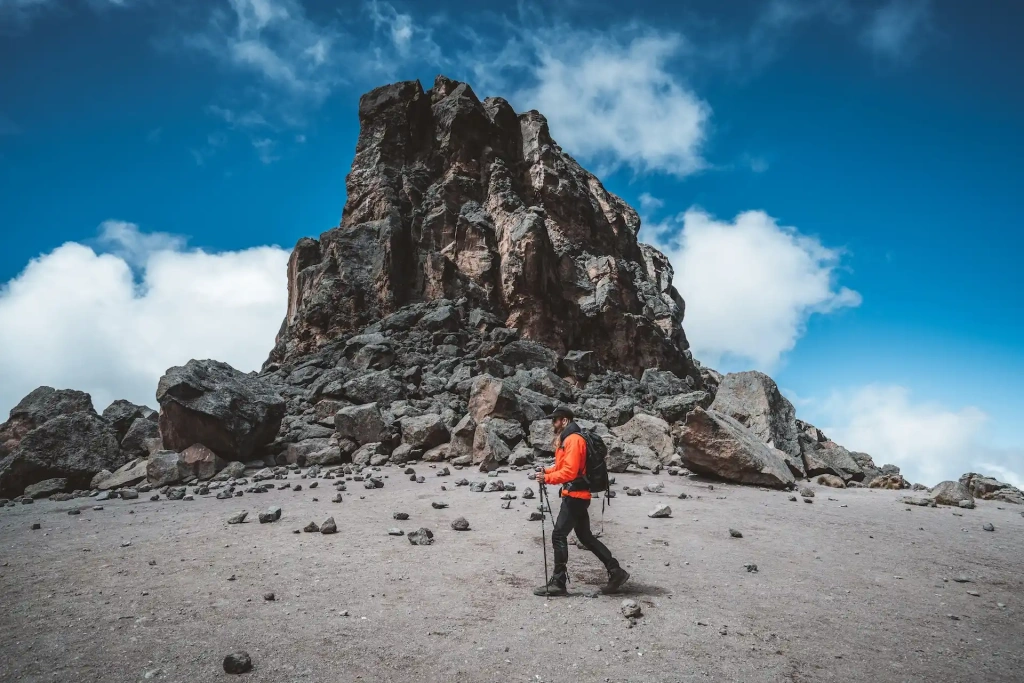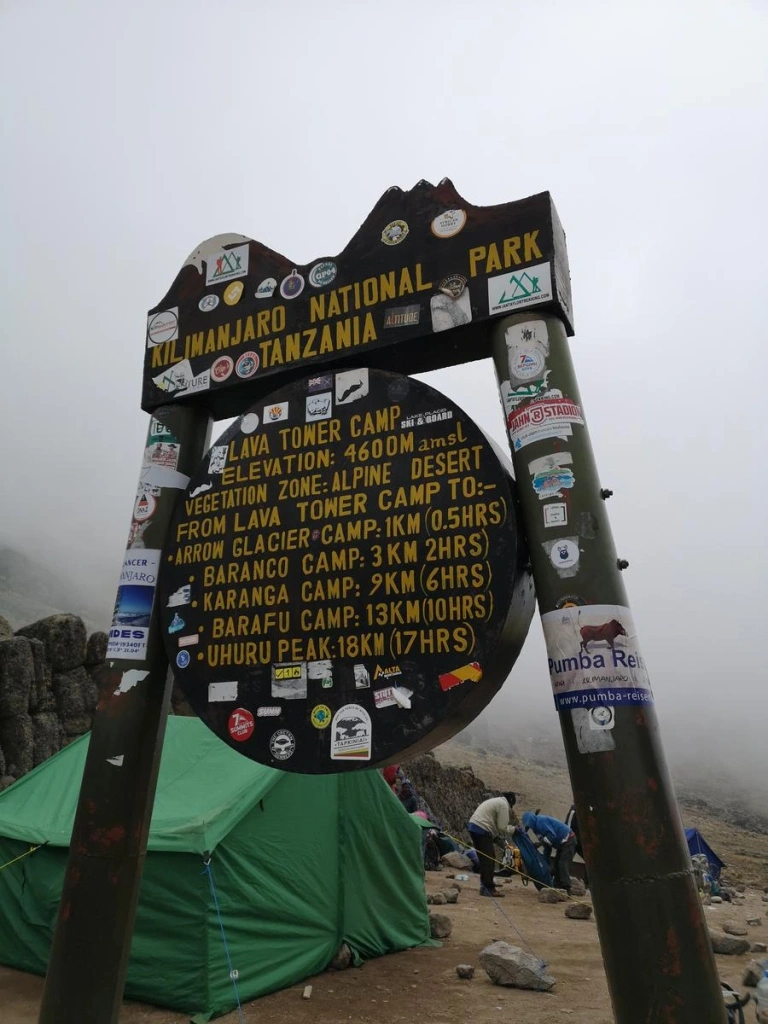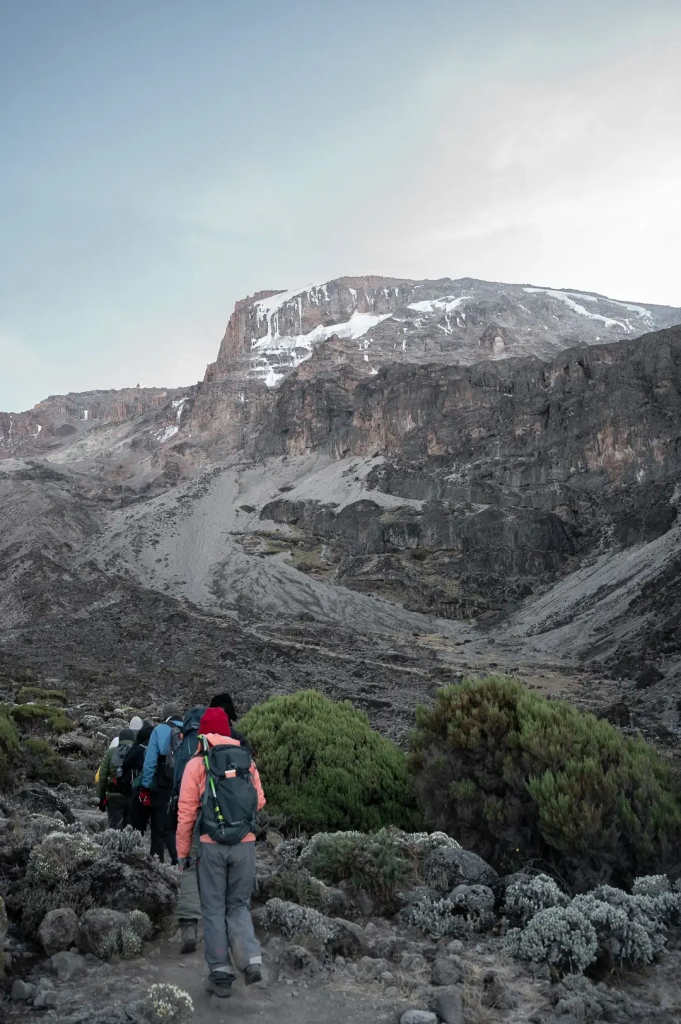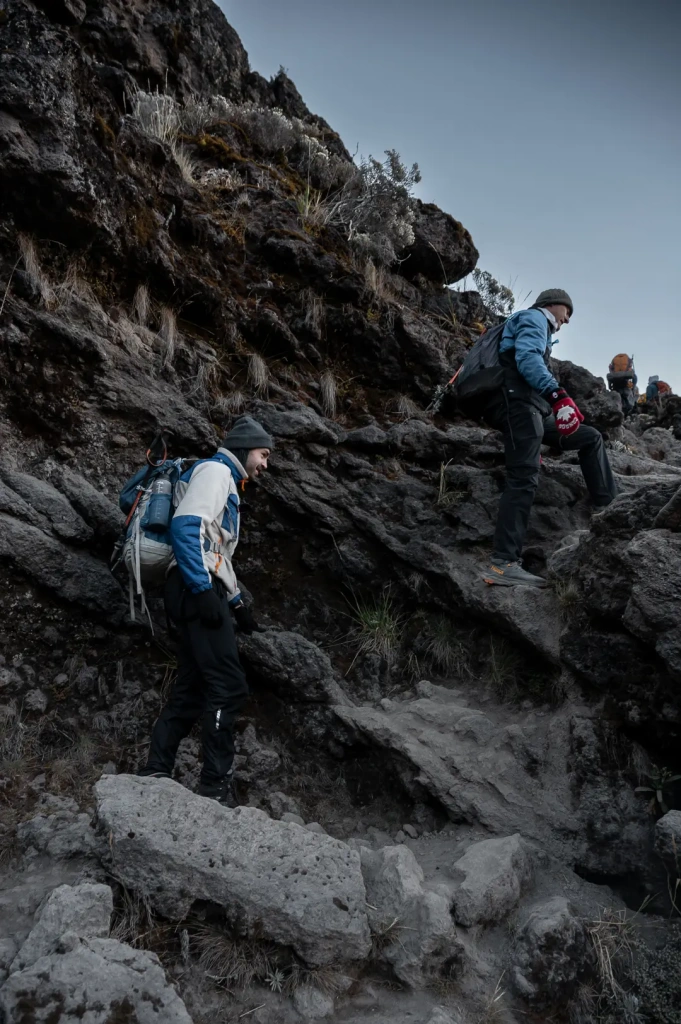This large rock outcrop near Uhuru Peak, the highest point on Mount Kilimanjaro, was formed by lava that once erupted and later solidified. Known as the Lava Tower or “Shark’s Tooth,” this striking geological formation began taking shape over 150,000 years ago. Today, the 90-meter (295-foot) volcanic “plug” stands at an altitude of 4,630 meters (15,190 feet) above sea level and is a popular stop for climbers. Several major routes pass by it, including Machame, Lemosho, and the Western Breach. At its base is the Lava Tower Camp, used for both camping and acclimatization.
Read on to discover how the famous Mount Kilimanjaro Lava Tower was formed, exactly where it’s located, and whether you can climb to its summit.
How did the Lava Tower on Kilimanjaro form?
The geological structure known as the Lava Tower is not just a mountain formation — it's what's called a volcanic plug. It began to form when Kilimanjaro was still an active volcano, likely between 150,000 and 200,000 years ago.
Molten magma from deep within the Earth rose to the surface. When the eruption stopped, the lava solidified and became a kind of giant “stopper” in the volcanic vent. Over time, the surrounding rock eroded away, while the Lava Tower remained, standing alone like a small new mountain growing out of Kilimanjaro’s slope.
While visually striking, the Lava Tower is not unique. There are other volcanic plugs around the world with similar origins. Some of the most famous include Devil’s Tower in the USA, Sugarloaf Mountain (Pão de Açúcar) in Brazil, Arthur’s Seat in Scotland, and Roque Nublo on Gran Canaria, Canary Islands.
The Lava Tower can only be seen during a Kilimanjaro climb. If you’d also like to witness this amazing natural landmark, Altezza Travel has prepared a special guide. We’ve compiled a checklist with everything you might need on your way to the summit. Grab it to prepare 100% for your adventure.

Where is the Lava Tower, Kilimanjaro, located?
Lava Tower sits on the slopes of Mount Kilimanjaro, west of its main summit, Uhuru Peak, and east of the Shira Plateau, which is the remnants of an ancient extinct volcano. It lies in the Alpine desert zone — one of Kilimanjaro’s five climate zones and the last before the Arctic summit zone.
In this climate zone on the slopes of Kilimanjaro, vegetation is nearly absent. Strong winds, extreme temperature swings, and very low humidity define the area. Daytime temperatures can reach up to 25°C (77°F), while at night it can become cold or even freezing. The landscape is mostly rocky, covered in loose gravel and volcanic stones — a barren, lifeless terrain of volcanic origin.
You may see icy formations around and on the Lava Tower itself—the result of moisture condensation, which happens mainly at night. These harsh conditions give the place a futuristic, otherworldly look.
Which Kilimanjaro routes lead to the Lava Tower?
If you want to see Lava Tower on your trek, choose your Kilimanjaro climbing route carefully. The following routes are suitable for seeing this landmark:
- Lemosho Route. One of the most popular options, the Lemosho route typically takes 6 to 8 days to complete. If you’re planning your first Kilimanjaro climb, we recommend avoiding short, fast-paced routes. A 7–8 day itinerary is ideal, as it allows for a gradual ascent and proper acclimatization without exhausting yourself before reaching the summit. Lemosho also boasts the highest success rate for reaching Uhuru Peak. The route begins on the western slope and takes climbers through a variety of scenic landscapes and notable natural landmarks. One such highlight is Cathedral Peak, located at 3,872 meters (12,703 feet) on the western edge of the Shira Plateau, which is often used for acclimatization hikes.
- Machame Route. Another popular choice, the Machame route starts in lush tropical forest and leads trekkers through all five of Kilimanjaro’s ecological zones on the way to the summit. The route can be completed in 6 or 7 days, but we strongly recommend choosing the 7-day itinerary for a more gradual and safer acclimatization process.
Lava Tower Camp
The summit of the plug once offered breathtaking panoramic views of the mountain and surrounding terrain. Climbing to the top used to be allowed, but today it's strictly forbidden due to safety concerns. The camp itself has no cabins — only space for tents and a few basic wooden toilets.
About a two-hour walk from the Lava Tower lies Arrow Glacier Camp, located on the rarely used and dangerous Western Breach route. Some climbers used to go up there for acclimatization, but beyond that point the path was too risky — and is now completely closed.
These days, after visiting the Lava Tower, trekkers descend to Barranco Camp (3,950 meters / 12,959 ft), located beneath the famous Barranco Wall.
In conclusion
For many climbers, the Lava Tower is a key stop on the way to Uhuru Peak. Even a short visit helps with acclimatization and offers the chance to see one of Kilimanjaro’s most fascinating geological features up close. So if you’re planning a climb, be sure to check whether your route includes this iconic volcanic plug.
All content on Altezza Travel is created with expert insights and thorough research, in line with our Editorial Policy.
Want to know more about Tanzania adventures?
Get in touch with our team! We've explored all the top destinations across Tanzania. Our Kilimanjaro-based adventure consultants are ready to share tips and help you plan your unforgettable journey.
















